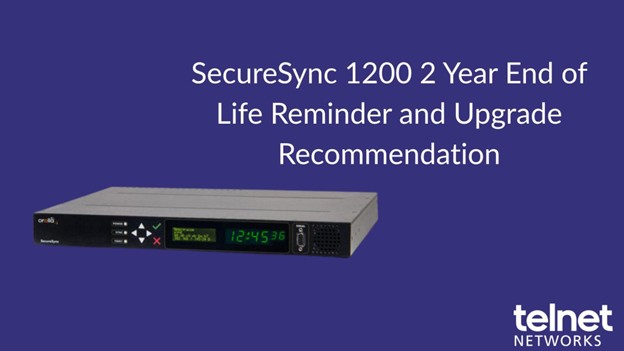Spectracom has introduced a new Anti-Jam (AJ) antenna for its GNSS-based timing systems that combats interference by limiting the antenna’s reception near the horizon. The antenna’s beam is focused at the zenith – where most of the GNSS satellites are – and away from the horizon, where most interference comes from.
Q. So, should I use it in my system?
In general, we say “Yes,” but your system will see fewer satellites than it did before. Will this be a problem? Probably not, but you are probably running a critical operation and don’t want to risk a change. Fair enough. However, if this is a critical system, then you probably have a fully redundant timing system with at least two GNSS time servers. If so, you can take advantage of this configuration and place an AJ Antenna on one of the time servers and use a standard antenna on the other.
Q. How much improvement can I expect?
We installed an AJ Antenna at a major datacenter with a dual-redundant time server configuration. The results are shown below. The antennas were mounted on the roof of the single-story datacenter, which was an industrial building, co-located within 10 meters of each other.

This datacenter suspected it was experiencing interference because the time servers would occasionally alarm on the loss of the GNSS signal. Spectracom time servers have “Holdover” oscillators in them – atomic clocks that continue to maintain very accurate time even when GNSS is absent.
However, no matter how accurate one’s internal clock is, it is still different, though ever so slightly, from the referenced Universal Coordinated Time (UTC) supplying the GNSS signals. So eventually your time will drift from UTC. We refer to the period when the GNSS signal is lost and the Time Server is coasting on its internal atomic clock as a “Holdover Event.” The chart shows the performance comparison between the two co-located time servers over a period of eight days, with blue for the Standard Antenna and orange for the AJ Antenna.
We can clearly see that the AJ Antenna reduced both the number of holdover events and their duration. As suspected, a nearby trucking company was being visited by trucks containing very illegal “privacy jammers” that interfered with GNSS reception. The AJ Antenna masked most of the RF energy coming from 20 degrees elevation and below, blocking the interference.
Q: When can I try this on my system?
If you have a dual redundant timing system, you have nothing to lose and everything to gain. The new AJ Antenna is a drop-in replacement for the standard antenna, without any cable or system configuration changes. If you don’t see any difference in performance, then you are not experiencing interference – at least not today. But should you become unlucky in the future, and you well may — GNSS interference is a growing threat — you will be protected. Moreover, you will have awareness of the threat and can notify the authorities of this illegal and dangerous activity.
Q: Why not always use an AJ Antenna?
For timing applications, you can. Standard antennas were designed for both timing and positioning applications. When using GNSS for positioning, you need at least four satellites — preferably more – to calculate your position. The satellites at the horizon give you the best geometry for your triangulation calculation.
For timing applications, you only need to receive from one satellite and there is no geometric factor. So your best satellites are at the zenith, away from interference, blockage and multipath. If you don’t care about detecting the interference presence and just want to block it, then use AJ Antennas throughout your system.
Q: What else can I do to detect jamming?
Spectracom offers Broadshield™, an optional software package for our SecureSync time servers that monitors the internal state variables of the GNSS receiver and alarms when jamming or spoofing is detected. The software contains over 75 different algorithms that examine the characteristics of the RF entering the receiver – signal level, spectrum, data formats, data consistency, accuracy, etc. — and will provide operator alarms when any anomalies are detected. Alarms can be configured as visual alerts, emails, or holdover actions.
Resilient PNT from Orolia
Any RF signal can be jammed, so there is no foolproof solution. Spectracom provides resiliency in many ways — detection, avoidance, hardening, and mitigation. Our new AJ Antenna is one more option, with more to come, to ensure resiliency and protect your critical timing operations






